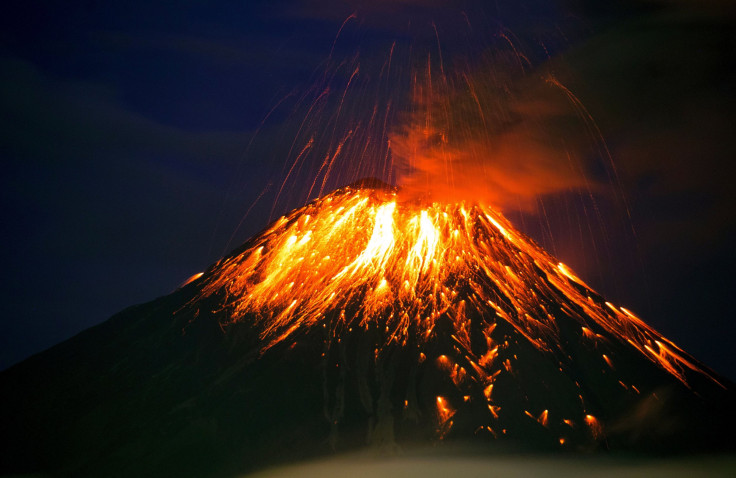'The Black Giant' Volcano Showing Warning Signs Of Collapse, Risks 'Colossal' Landslides
KEY POINTS
- 'The Black Giant' volcano in Ecuador is showing signs of flank instability
- Flank failure could lead to a 'colossal' landslide
- The new study highlights the importance of monitoring volcanoes
The Tungurahua volcano in Ecuador is showing early warning signs of flank instability. According to researchers, the deformation increases the risk of flank collapse, which could then result in a “colossal” landslide that could significantly damage its surrounding areas.
The Black Giant
High rates of volcano surface deformation can be signs of an eruption but it can also be signs of slope instability and possible flank collapse. Tungurahua volcano in Ecuador, for instance, has a long history of flank collapse. Since 1999, the volcano locally known as “The Black Giant” has been frequently active, with its 1999 activity causing the evacuation of 25,000 people.
When the Tungurahua volcano erupted 3,000 years ago, the activity caused a partial collapse of the volcanic cone, causing a wide-spread avalanche of debris equivalent to 11,000 football fields. The volcano has steadily been rebuilt since then but, in 2015, the site above the previous collapse showed rapid signs of collapse even when the other sites have been rather stable.
This asymmetric deformation, however, was not assessed then.
‘Potential Collapse’
In a new study now published in the journal Earth & Planetary Science Letters, researchers investigated the November 2015 rapid deformation event in Tungurahua volcano's west flank using satellite data.
According to the researchers, the deformation is likely caused by imbalances between the magma being erupted and the magma being supplied. This could then contribute to slope instability during unrest episodes and lead to flank failure. If it happens, it could lead to a possible collapse resulting in a “colossal” landslide.
That said, the extent to which the modeled magmatic source could result in flank failure is unknown but, researchers note that the results of the study highlight a factor that must be considered as one of the possible trigger factors along with others such as tectonic earthquakes and hydrothermal alteration. Further, the study also highlights the importance of monitoring volcanoes that have a history of flank collapse.
“Magma supply is one of a number of factors that can cause or contribute to volcanic flank instability, so while there is a risk of possible flank collapse, the uncertainty of these natural systems also means it could remain stable. However, it's definitely one to keep an eye on in the future,” study lead Dr. James Hickey of the University of Exeter said.

© Copyright IBTimes 2025. All rights reserved.






















